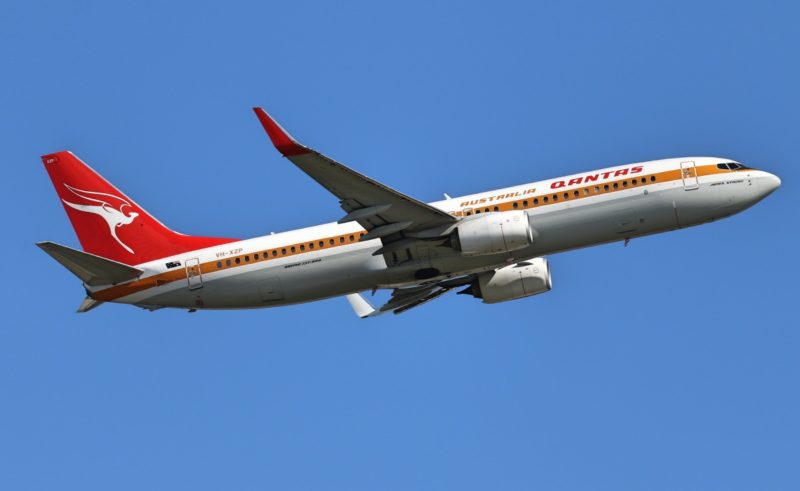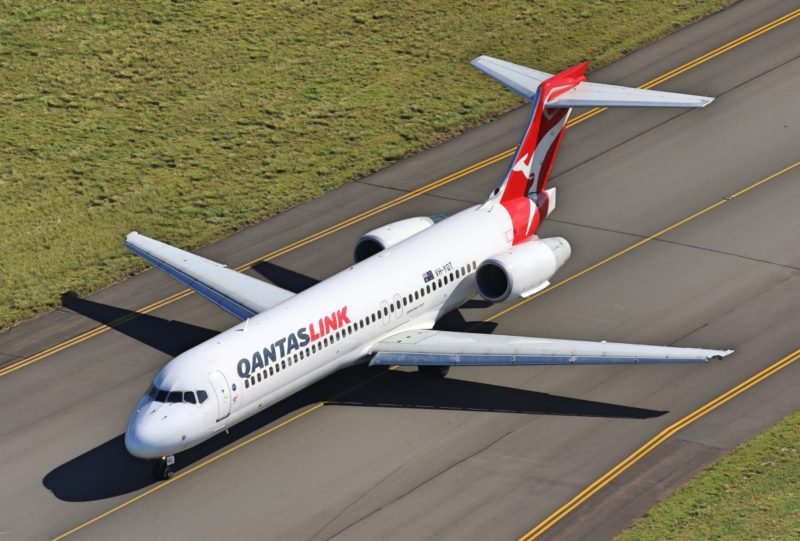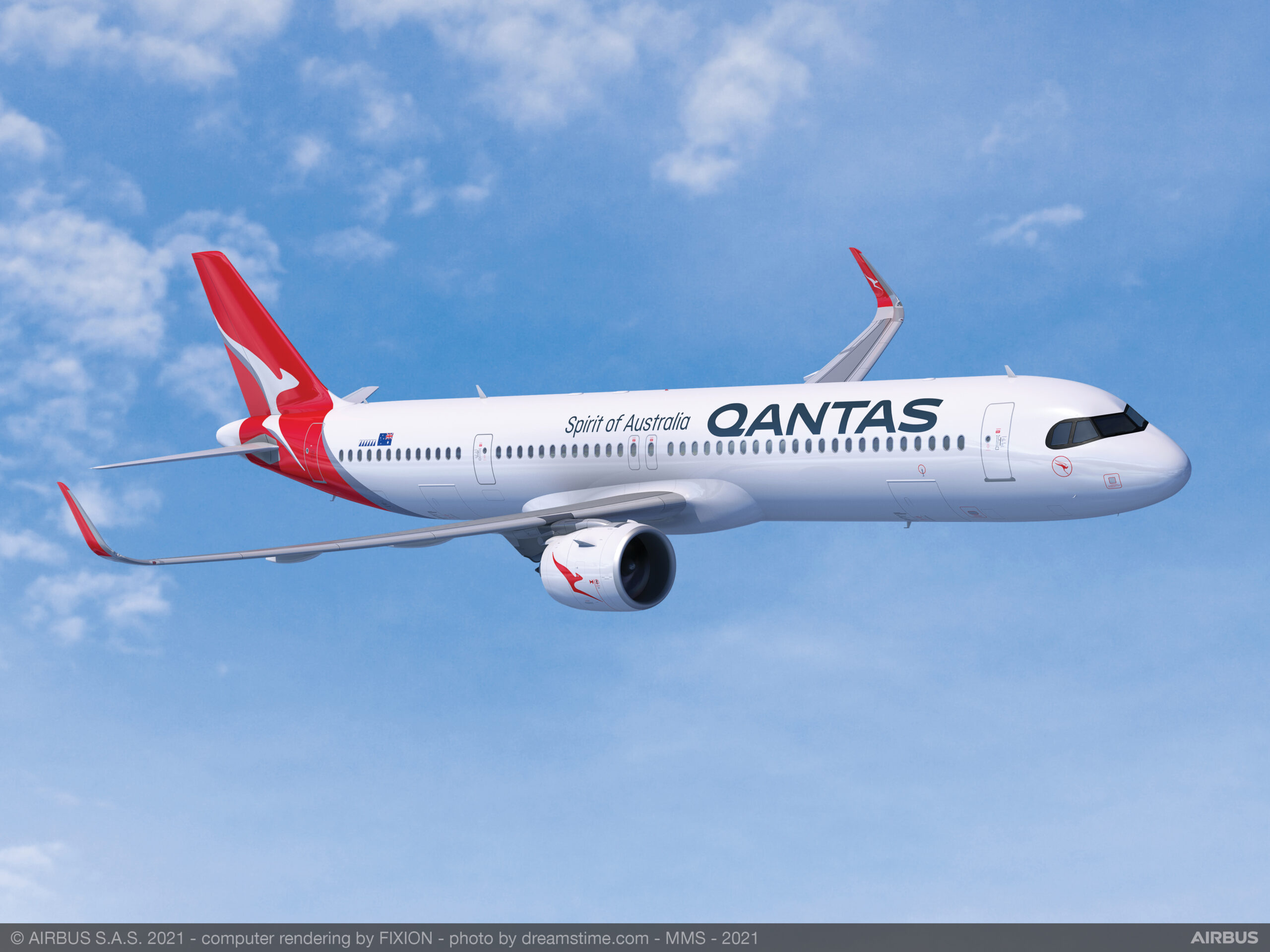Airbus and Qantas today announced a major deal, consisting of 20 A321XLRs and 20 A220-300s. The deal also includes purchase rights for another 94 aircraft, including smaller models.
In addition to today’s announcement, Qantas Group also has an existing agreement with Airbus for over 100 A320neo Family aircraft; these will be used to renew the low-cost-carrier Jetstar’s A320ceo Family fleet. This in total brings Qantas Group and Airbus’ commitments to 299 aircraft. Once finalised, it will represent Australia’s largest aircraft order in history.
In addition to Airbus’ win, Pratt and Whitney was selected to provide their Geared Turbofan engine for Qantas’ A320neo Family and A220s; whereas for Jetstar, CFMs LEAP engine was selected. Qantas’ current and past 737 fleet has been exclusively powered by CFM56 engines, whilst Jetstar’s A320ceo fleet is powered by the IAE V2500.
Both of the new generation engines, from CFM and Pratt and Whitney, will offer Qantas Group with fuel savings between 15-20 percent, contributing to the broader emission reduction efforts the Group is aiming for.
Fleet Renewal Scheme
Qantas operates a narrowbody fleet of 75 737-800s and has been assessing options to replace the aircraft for a few years now. Also set to be phased out are 20 Boeing 717s, which operate under the regional brand QantasLink. The new aircraft will be delivered from 2023 onwards over the course of ten years; this will not only act to replace existing aircraft, but also to expand operations and increase route frequencies depending on demand.
Aircraft as flexible as the A321XLR and A220 allow Qantas to tailor routes based on demand, resulting in lower operating costs and increased profits. For example, the A321XLR could operate Sydney – Perth one day and the next day be operating Sydney – Tokyo. This is perfect if there are days where a widebody, such as an A330 or 787, is too much for a particular route. Additionally, it allows Qantas greater tweaking power when it comes to seasonal demand, reserving particular aircraft for popular holiday routes and then later placing them on every other flight when applicable.
“For customers, that means having more departures throughout the day on a smaller aircraft, or extra capacity at peak times with a larger aircraft. Or the ability to start a new regional route because the economics of the aircraft make it possible.”
Qantas CEO Alan Joyce
Qantas says the XLR can carry around 15 per cent more passengers on each flight than the airline’s existing B737-800s, making it well suited to busy routes between capital cities like Melbourne, Sydney and Brisbane. Whilst this doesn’t exactly highlight usage of the added range, the extra payload and fuel could make for additional freight to be carried beneath the cabin – an attractive proposition in the booming air freight market.

QantasLink currently operates the Boeing 717 on the east coast of Australia and has its similar counterpart, the Fokker 100, mostly operating in Western Australia to support mining routes. The aircraft has proven to be a dependable asset to Qantas’ fleet, taking over the likes of Q400s during peek demand on routes and operating where the 737 is too much.
At an average of nearly 20 years old though, the aircraft has been subject to replacement analysis until today.

Competitors Response
Boeing and Embraer were aggressively competing against Airbus, to secure Qantas as a customer for the 737 MAX and E2 regional jet families.
Suggestions were made that Qantas would stick to its current blood and utilise maintenance and flight crew commonality with 737 MAX jets. This did not pose an issue to the group, likely because of Jetstar’s proven and existing A320 operations as well as their own order that makes the NEO just as desirable. Additionally, with A320s operating for QantasLink and a strong Airbus presence of A330s and A380s, the total training across types will be minimal.
For ultra-long-range flights between Australia, Europe and America Qantas continues to assess modified A350s, which were selected over Boeing’s competing 777X platform.
Once all is finalised, the 787 Dreamliner will remain the only Boeing aircraft operating in Qantas’ passenger fleet; bringing an end to a once all-Boeing run. Freight on the other hand sees the 747-8 and 767 performing at record performance alongside newly acquired A321 P2F models.
“Although we are disappointed, we respect Qantas’ decision and look forward to continuing our long-standing partnership.”
Boeing Spokesperson
Qantas got a good trial of the Embraer aircraft when it partnered with Alliance and began operation Embraer E1 jets; however, an attractive deal from Airbus, which paired a family of narrowbody jets under the one supply chain, ended up being the favourable option.
Embraer has been reached for comment, however they are yet to respond.


